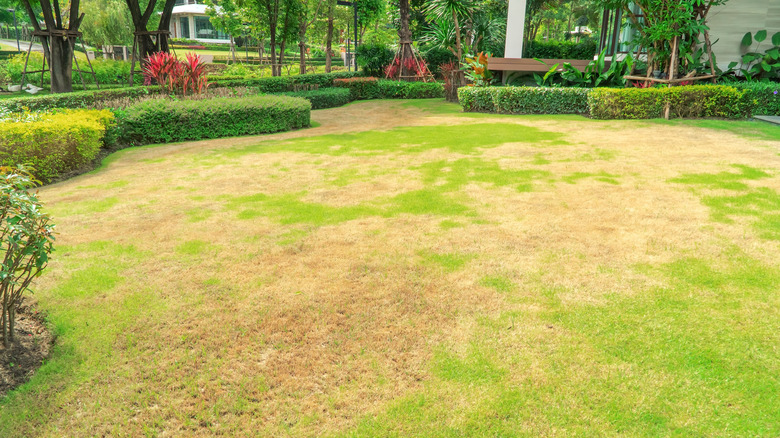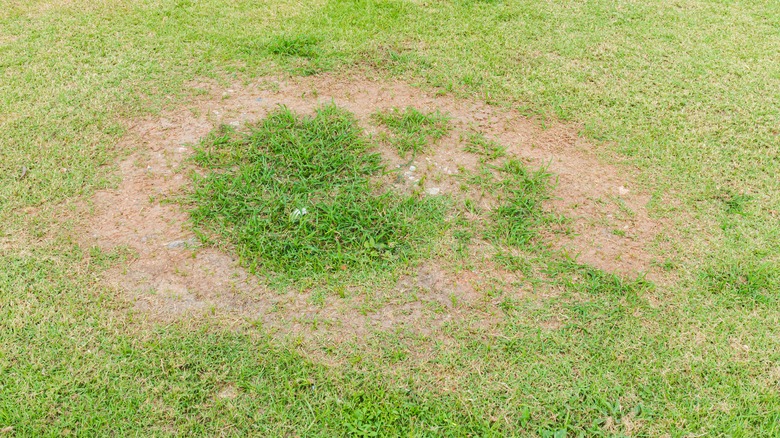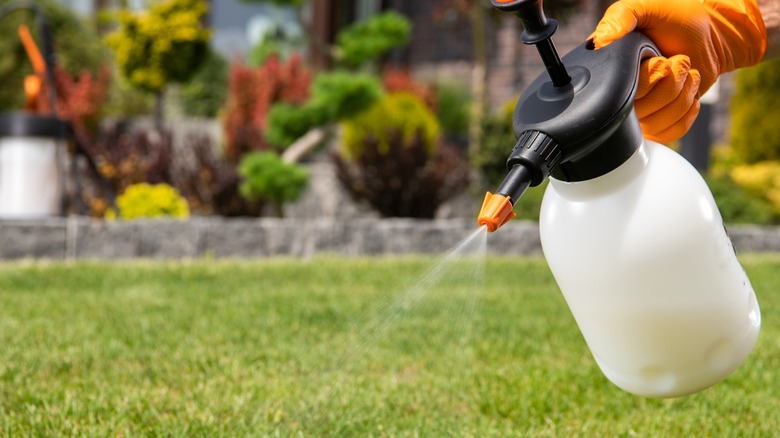What Is Large Patch Disease And How Do You Treat It In Your Lawn?
Large patch disease, also known as Rhizoctonia solani, is a fungal disease that primarily wreaks havoc on warm-season turfgrasses. It can transform a healthy, verdant lawn into a discolored, lifeless landscape. Seeing these patches might seem jarring to you, interrupting the seamless sea of green grass you cherish. You unintentionally invite large patch disease when you overwater your lawn, feed it too much nitrogen, and mow too low. Excessive moisture creates a haven for this fungus, while too much nitrogen and low mowing weaken your turf's natural defenses, leaving it susceptible to the disease.
These unattractive patches aren't just a minor, temporary nuisance; they can escalate into a more damaging issue that can devastate your beautiful landscape if not addressed swiftly and properly. Yet, as alarming as these symptoms may appear, all hope is not lost. This common lawn disease, although intimidating, can be treated in a variety of ways that require careful management. This includes aerating the lawn or applying a targeted fungicide. However, before taking such steps, it's crucial to understand and anticipate the conditions that might trigger this disease as you take care of your lawn throughout the year. This knowledge can guide you in implementing preventative measures to mitigate the impact of large patch disease.
Understanding large patch disease
As mentioned, large patch disease is easily identifiable by the development of big, circular-shaped yellow-brown spots on your grass. The proportions of these patches vary; some are only a few inches across, while others can span several feet. If left unchecked, these patches tend to merge, leading to expansive areas of affected grass. The problem escalates as these individual patches coalesce, exacerbating the visual impact and the overall damage to your lawn.
The thriving conditions for large patch disease are very specific — it prefers the moist and cool conditions that often accompany the transition periods from warm to cool seasons. So, as you watch the leaves change in fall or start to grow back in spring, you may also have to keep an eye out for the unwanted appearance of these telltale patches on your lawn.
When the temperatures begin to drop as fall approaches or start to rise in early spring, this dormant fungus springs into action. It leverages the moisture associated with these seasonal transitions and feeds off your lawn. Understanding this correlation between the changing seasons and the onset of large patch disease can give you valuable knowledge. It's all about staying one step ahead of the fungus — anticipating its moves and adjusting your lawn care practices accordingly to minimize its impact.
Treating and preventing large patch disease
To treat large patches of disease, you have two options: cultural control and chemical control. Cultural control involves modifying your lawn care practices, ensuring you don't overwater or overfeed with nitrogen, and keeping your mowing height appropriate. Chemical control, on the other hand, requires using specific fungicides that target and suppress the disease. By balancing these two approaches, you can effectively keep the disease at bay.
Generally speaking, fungicides should be applied in the early fall or spring if outbreaks are common in the late spring. In the case of a severe infestation, consider reseeding the lawn, which involves removing dead grass, spreading new grass seed, and watering regularly. If you decide to take this route, choose a grass variety resistant to large patch disease.
It's always best to practice proper lawn care to prevent the disease, which can significantly reduce the chances of large patch disease developing. This includes maintaining proper soil pH levels, avoiding excessive nitrogen fertilization in late fall and early spring, and not overwatering your lawn. You should also aim to improve the drainage of your lawn to prevent waterlogging, which can encourage fungal growth. Aeration is another useful technique that helps reduce the thatch layer where the fungus resides. By periodically aerating your lawn, you promote better air circulation and drainage, making it harder for the fungus to survive. Also, mow your grass at the recommended height for its type to ensure it remains healthy and resistant to disease.


